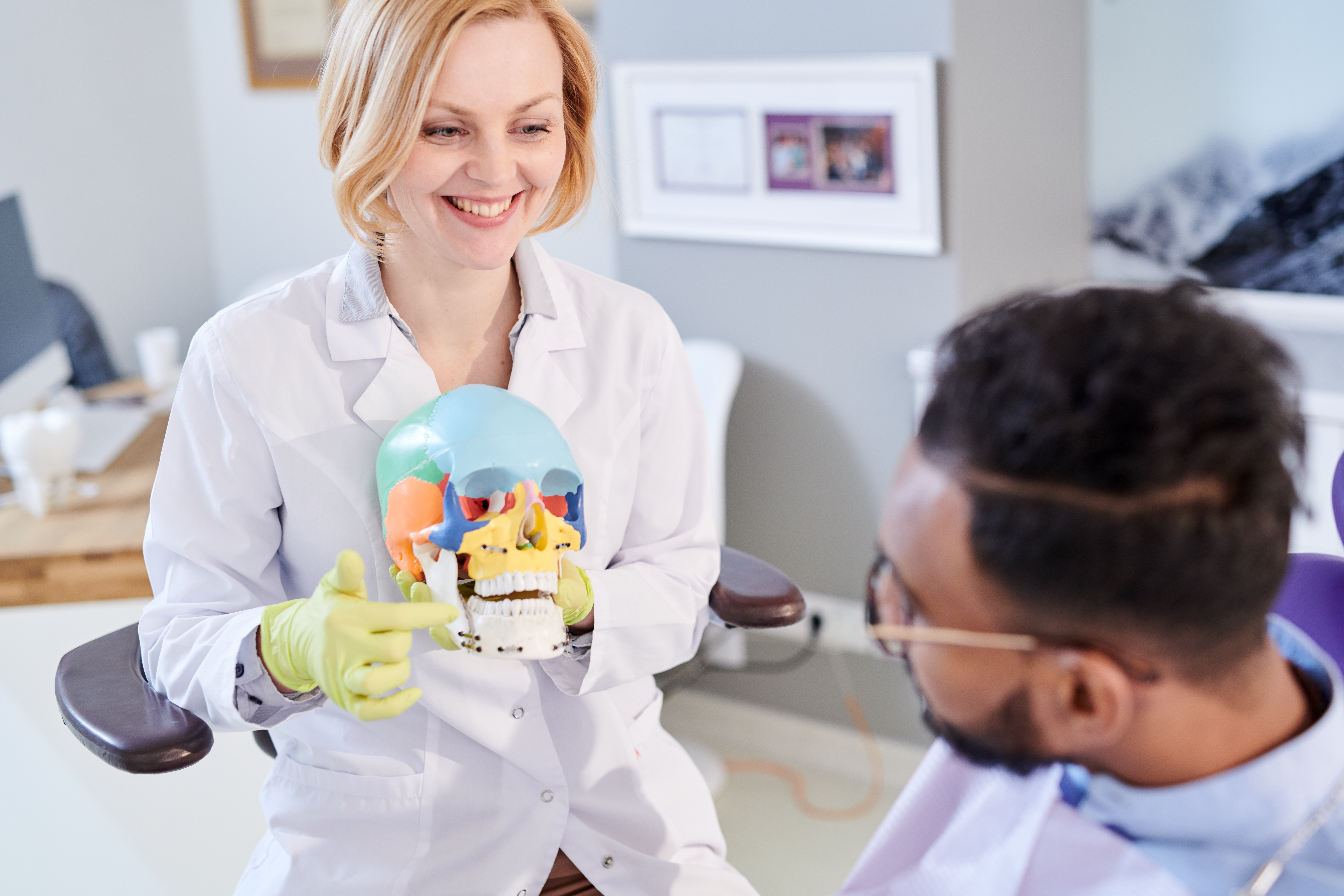
Breathing and Airway Support Part 3: Helping Our Adult Patients
By Steve Carstensen, DDS
Patients come to our dental offices with some common complaints related to poor breathing and oral inflammation…dry mouth…bad breath…gingivitis…excessive wear on teeth. They ask us to help them.
One of the things we can do for our patients is to be curious about whether they have intermittent hypoxemia that is diagnosable and treatable. I caution us to be aware of having too narrow of a focus. When someone presents with jaw pain, wake-up headaches, and tooth wear, we tend to think they need a supporting nightguard. I think we should be curious about what else might be going on.
I ask my patients about snoring. I ask them if they have been diagnosed with a breathing disorder. I wonder if they should be using CPAP before I make a bite splint. If you make a splint, they may come back and report they don’t like the splint, which may be because it interferes with their breathing. So, I recommend we stay curious, and when we do make a protective guard for their teeth, we ask more questions. Make sure the diagnosis we make not only correlates with the symptoms, but the patient responds well to the treatment we provide.
How can we help our patients’ breathing physiology? We can help them be better breathers. There are oral appliances that keep the jaw from falling back and crowding the airway but what about the daytime? It turns out that people who breathe “badly” during the day develop breathing behaviors that the brain continues during the night, and these behaviors are inefficient for keeping the airway open during sleep. So, if we help our patients breathe better in the daytime, we set their brains to be more capable of handling airway disruptions during sleep.
If you’ve read the book Breath by James Nestor, you will learn about the daytime problems translating into nighttime problems and that nose breathing is best for our physiology. I am a huge nose breathing fan. There are electrical signals that pass from specialized cells in the nose directly to the limbic system which influences our autonomic nervous system. It filters sensory signals from the rest of the body and sends proprioceptive signals into the cortex and down into the autonomic nervous system. None of these brain-signaling signals happen with mouth breathing.
If you ask someone, “How is your nose breathing?” They will say, “Fine,” because you are the dentist, and they think that is a strange question. They also are accustomed to the amount of work it takes to breathe through their nose, so they don’t really know if they breathe through their nose well enough. The way to test is to ask them to close their lips and put their finger over their lips for two minutes and breathe calmly. With the finger over their lips, they are unlikely to have difficulty breathing through their nose but if they start breathing faster this is a sign of stress. If their heart rate goes up, if they know it was tough for them to do, there is something interfering with their nose breathing. It might be a deviated septum, allergies, a head cold or chronic rhinitis—but something is wrong.
Knowing this is handy when we are planning to do restorations. You won’t use a rubber dam if they can’t breathe through their nose, or you will schedule to do the restorations after they’ve been medicated. I have found that Afrin is good for clearing the nasal passages before dental treatments. Short-term help is good but stay curious about how often they cannot breathe through their nose, and help them.
Related Course
Mastering Dental Photography: From Start to Finish
DATE: October 29 2026 @ 8:00 am - October 31 2026 @ 12:00 pmLocation: The Pankey Institute
CE HOURS: 19
Regular Tuition: $ 2995
Single Occupancy with Ensuite Private Bath (per night): $ 355
Dental photography is an indispensable tool for a high level practice. We will review camera set-up and what settings to use for each photo. All photos from diagnostic series, portraits,…
Learn More>






